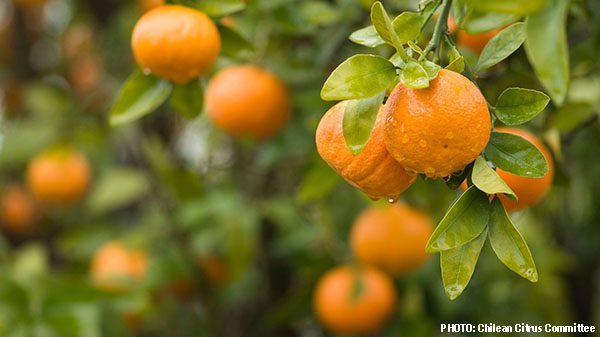May 15, 2023 — The Citrus Committee of ASOEX has released its estimate for the 2023 season, projecting global exports of 345,000 tons. This represents a significant increase across all categories from 2022, when Chile was negatively impacted by climatic factors, logistical issues and rising freight costs. Citrus exports in 2022 were consequently down by 32%.
This season, Chilean citrus exports have returned to normal levels. Projections by category are as follows:
- Clementines: 55,000 tons
- Mandarins: 125,000 tons
- Navel Oranges: 90,000 tons
- Lemons: 75,000 tons
The U.S. market can expect to receive fruit with favorable sizing, color, and flavor. Last season’s rains helped to alleviate the water deficit, especially in the Coquimbo region, so the Committee anticipates good sizing. The cool autumn nights and warm days have also had a positive impact on color and Brix.
The season started in week 15, with the first shipments of clementines, including Oronule, Orogrande and Clemenule varieties from early orchards in the Coquimbo region. As of week 19, 3,130 tons of clementines have been shipped to the U.S.
The U.S. is Chile’s #1 Export Market for Citrus
During the 2022 season, clementine exports reached 42,090 tons. The U.S. was the main destination market, accounting for 99% of total shipments. Chilean mandarin shipments reached 89,130 tons, with 97% being shipped to the U.S. As for oranges, Chile exported 80,623 tons. Again, the main destination market was the U.S., with 92% of shipments.
Lemons, on the other hand, had total shipments of 56,260 tons during this past season. Fifty-five percent of lemons were exported to the U.S., while 38% went to the Far East, 6% to Europe, and the remainder to Latin America and Canada.
Chile’s citrus orchards are distributed between the Atacama and O’Higgins Regions, with most orchards (7,549 hectares) located in the Coquimbo Region. This is followed by the Metropolitan Region with 6,916 hectares, and the Valparaíso Region with 5,600 hectares. In terms of citrus categories, mandarins have the largest planted area, with 11,184 hectares.
The Chilean Fresh Fruit Association will be working with retailers across the country to implement sales-focused promotional programs throughout the season. Weekly crop reports will be distributed to the trade starting from Week 20.



